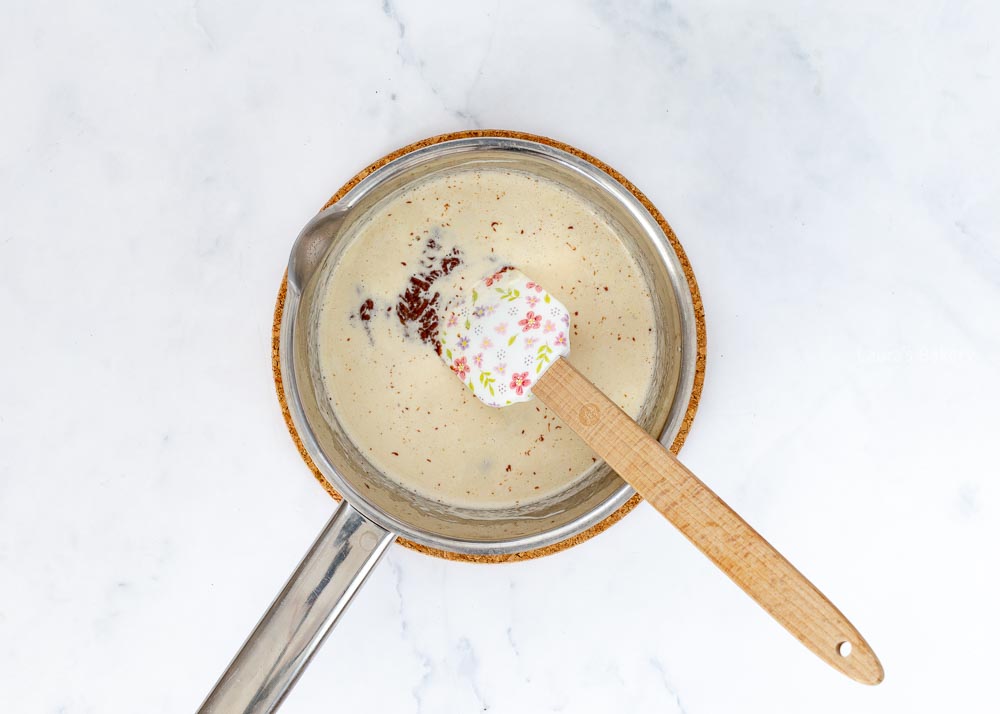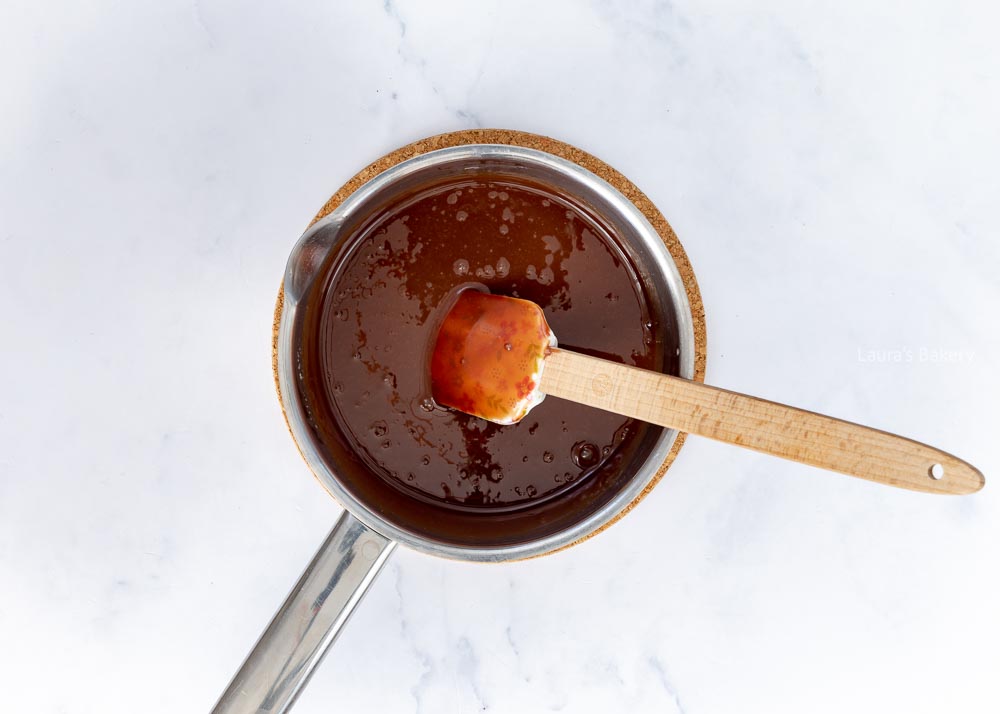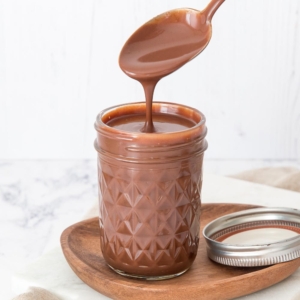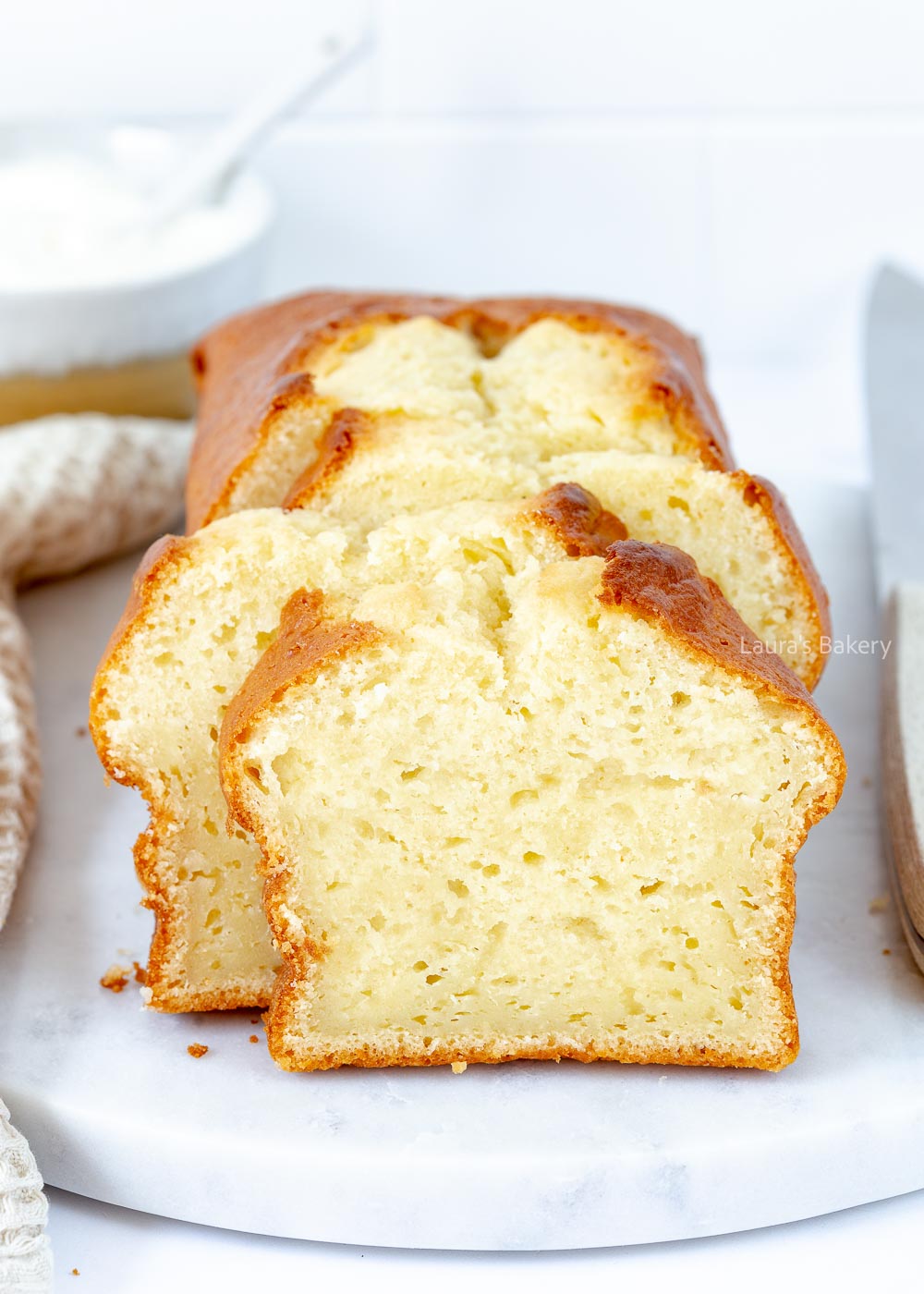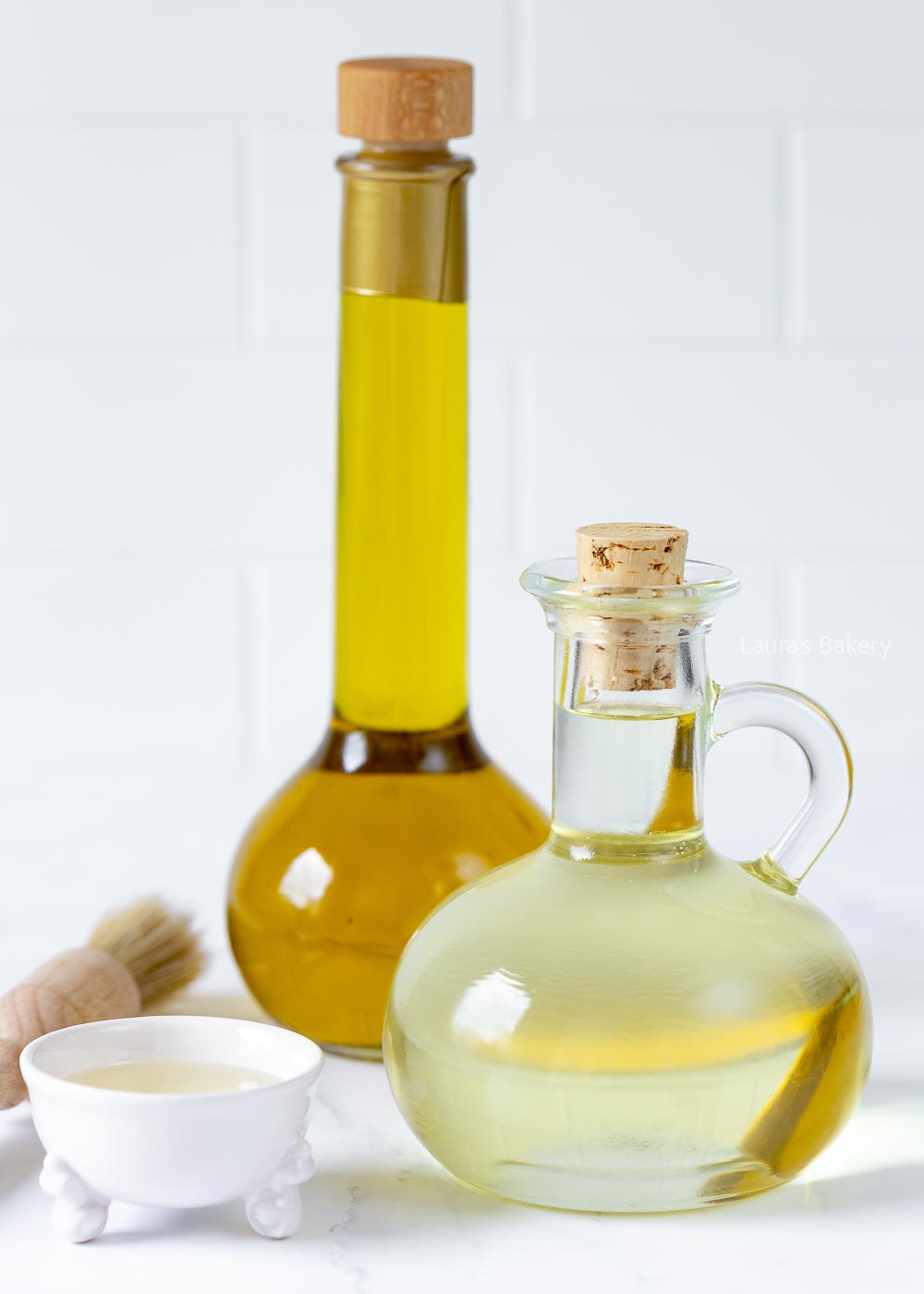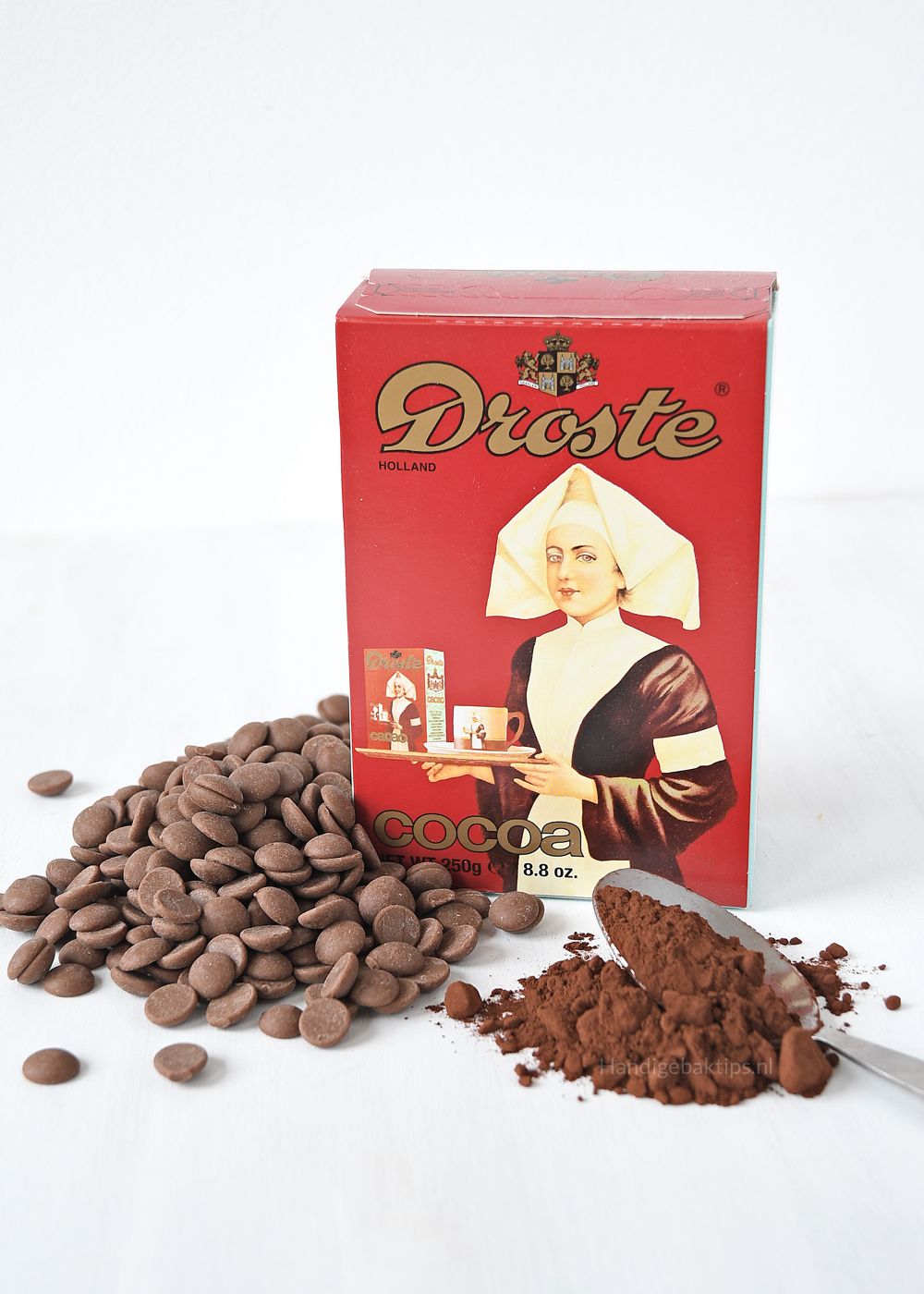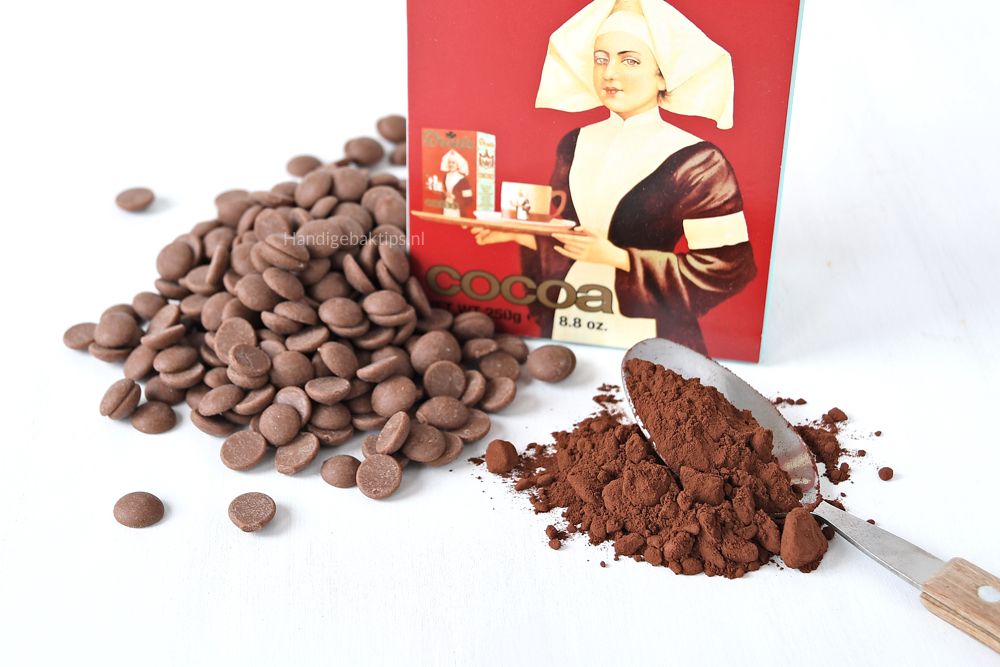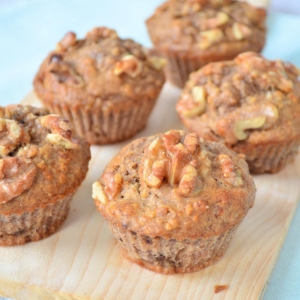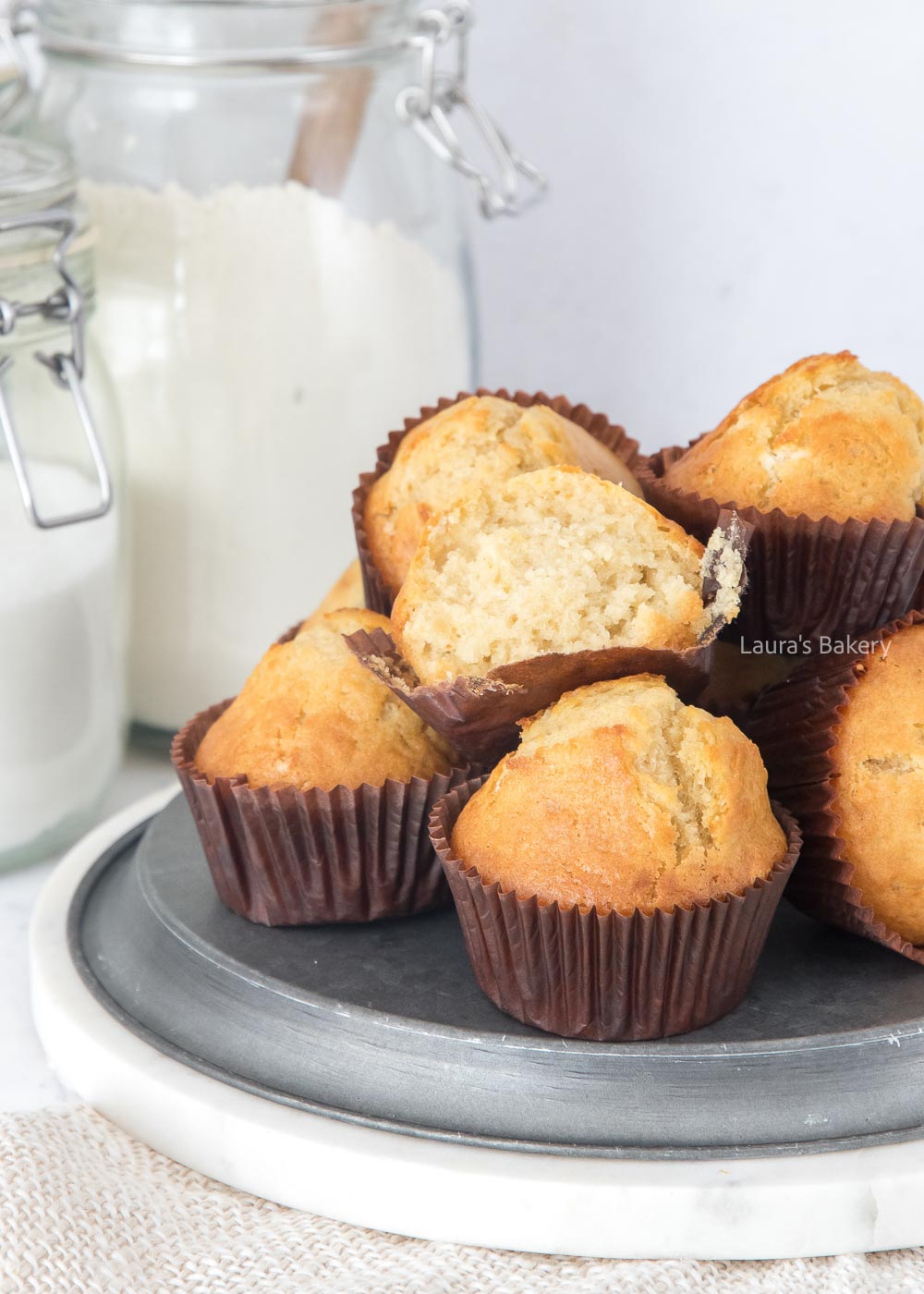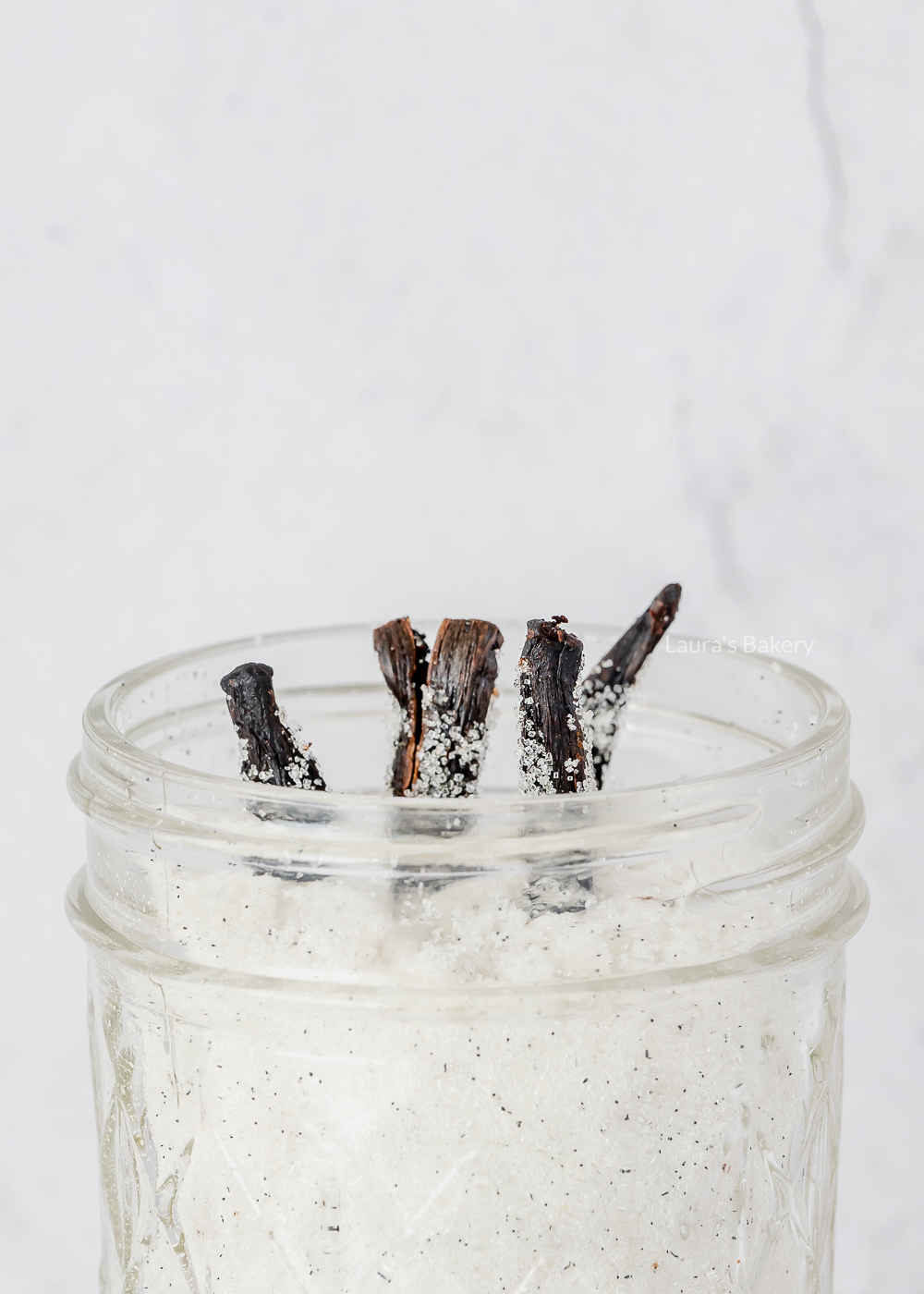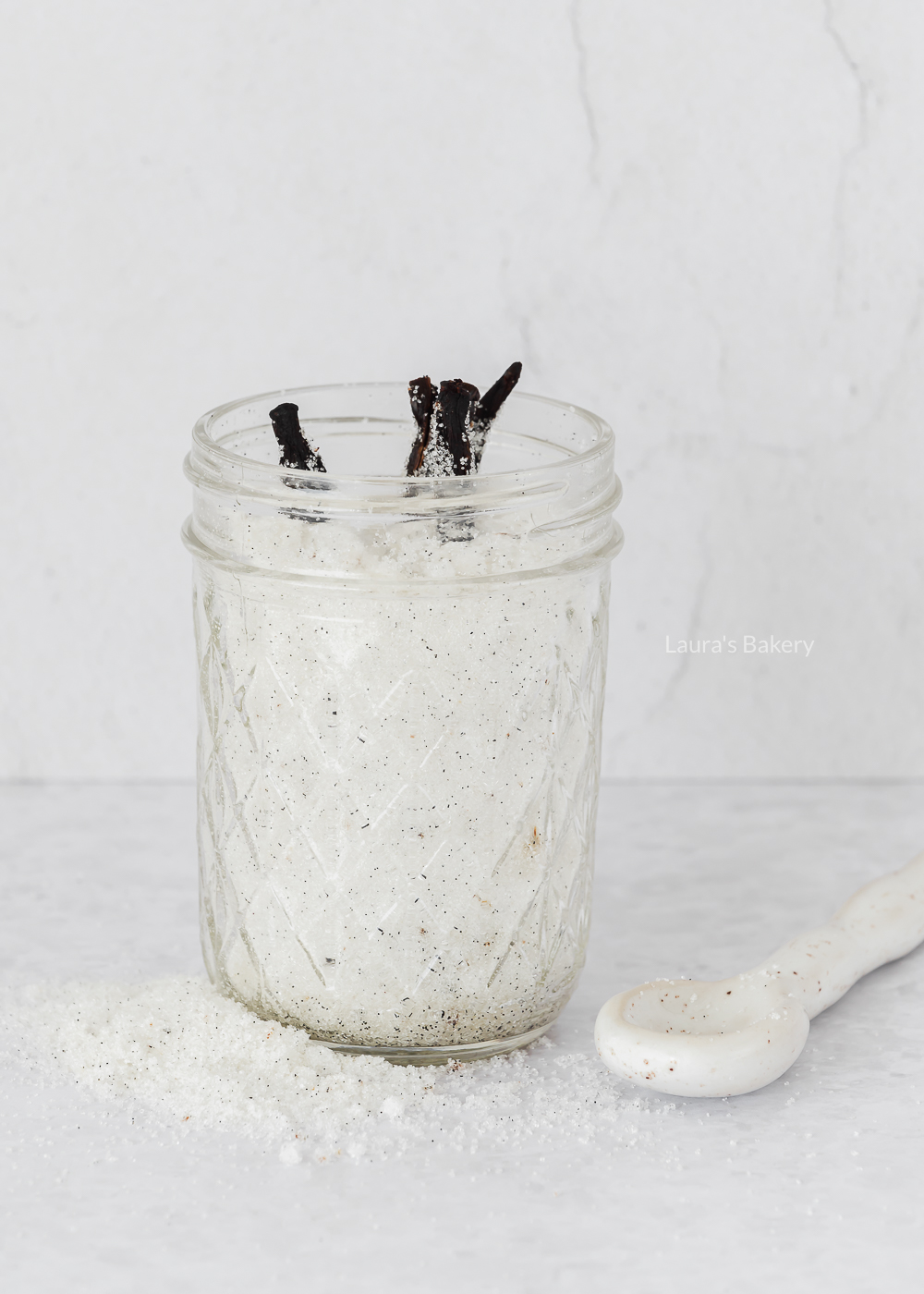Chocolate baked goods are often made with cocoa powder, but melted chocolate is also regularly used. In brownies, you can even find both chocolate as well as cocoa powder combined. Is there a reason for choosing chocolate or cocoa powder, or can you just do what you like?
I answer all your questions about baking with chocolate or cocoa powder. I will also explain the difference between Dutch processed cocoa, raw cocoa powder and natural cocoa powder.
Baking with cocoa powder
When I say cocoa powder, I mean unsweetened cocoa powder, not chocolate milk powder. In the Netherlands this is common knowledge, but in America ‘our’ unsweetened cocoa powder is called Dutch processed cocoa powder. Because this cocoa powder is unsweetened, it still needs something sweet in the recipe to make it taste good. Try some cocoa powder and you will see that it is very bitter and not very tasty.
I use cocoa powder myself in most of my baking. It’s very simple: you replace a few tablespoons or a certain number of grams of flour in any basic recipe with cocoa powder. That way, the proportions of dry ingredients in the recipe remain almost the same and you don’t suddenly get a very dry dough or batter.
For a cake, I usually replace 20 grams (0.7 oz) of flour with 20 grams (0.7 oz) of cocoa powder, which is about 2 tablespoons. If I want an even more intense chocolate flavor, I use (and substitute) twice as much. It is worth remembering that cocoa powder gives a more intense chocolate flavor than (melted) chocolate. To achieve the same effect, you need a lot more chocolate, which in turn affects the recipe.
Personally, I find cocoa powder the easiest option when I want to give a recipe a twist. You don’t really have to think about it and the chances of a good, tasty bake are high. It can also be used in any recipe, be it a batter or a dough.
Baking with chocolate
Sometimes melted chocolate is used to flavor a baked product. I myself once added a bar of melted chocolate to a vanilla cake batter. It turned out tasty, but I hadn’t really thought through the rest of the recipe, so it became a fairly compact cake and the chocolate flavor was not as intense as I had hoped. So it’s not impossible, but it does take a bit more thought to get a good result.
In other recipes it is actually better to go for melted chocolate. For example one of my favorite recipes is a simple chocolate mousse with whipped cream and chocolate. You cannot make this recipe with cocoa powder (as 1:1 replacement for the chocolate). The melted chocolate will solidify naturally which gives you the end result of a mousse-like texture. The cocoa powder would not have that effect.
Another recipe that uses only chocolate is lava cake. These are served hot straight from the oven while the chocolate is still soft. If you allow the cake to cool, the liquid centre will become harder and harder. So you cannot make these cakes with cocoa powder.
You can add melted chocolate to a batter, but not to a dough. So for a cookie dough, you really have to rely on cocoa powder.

